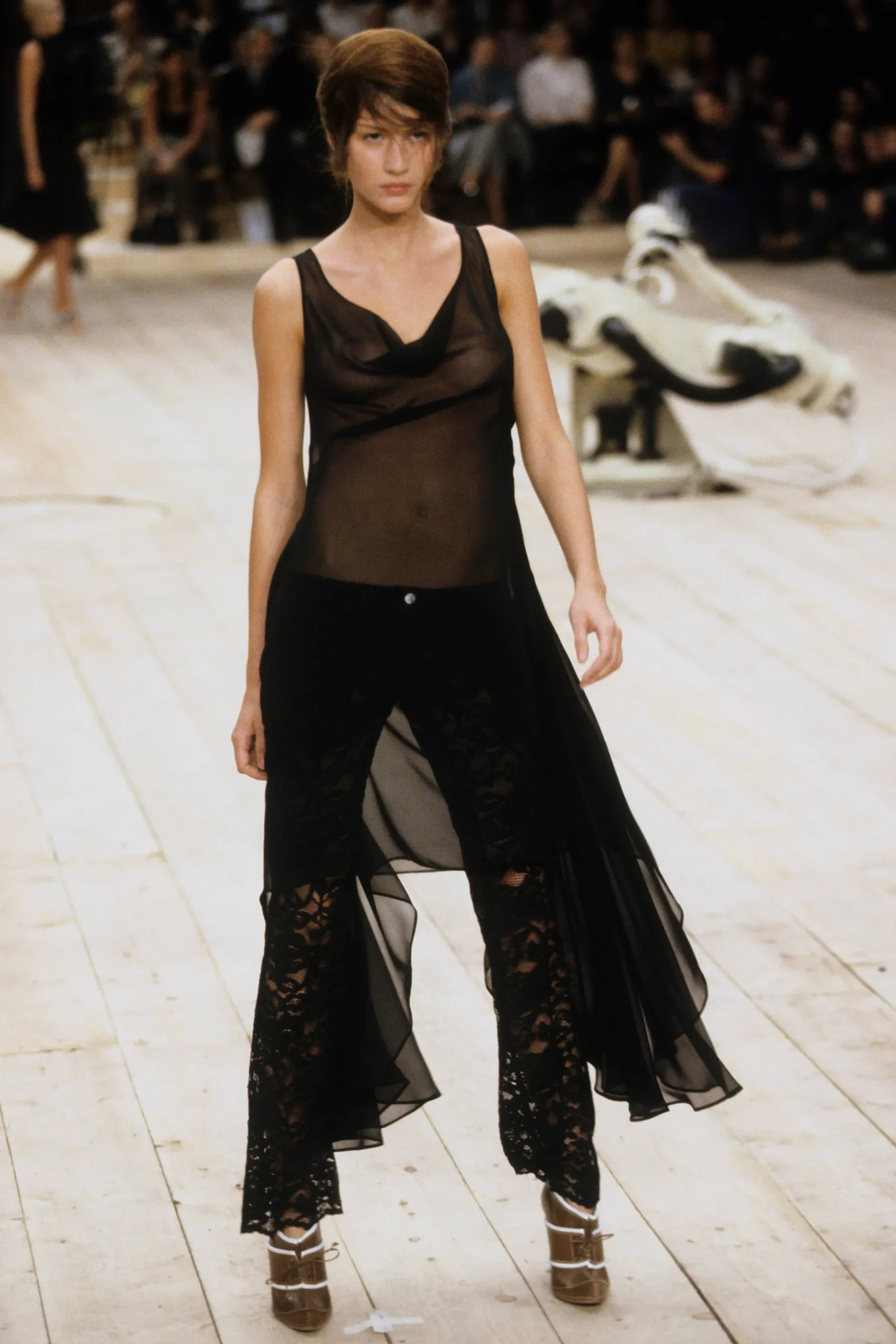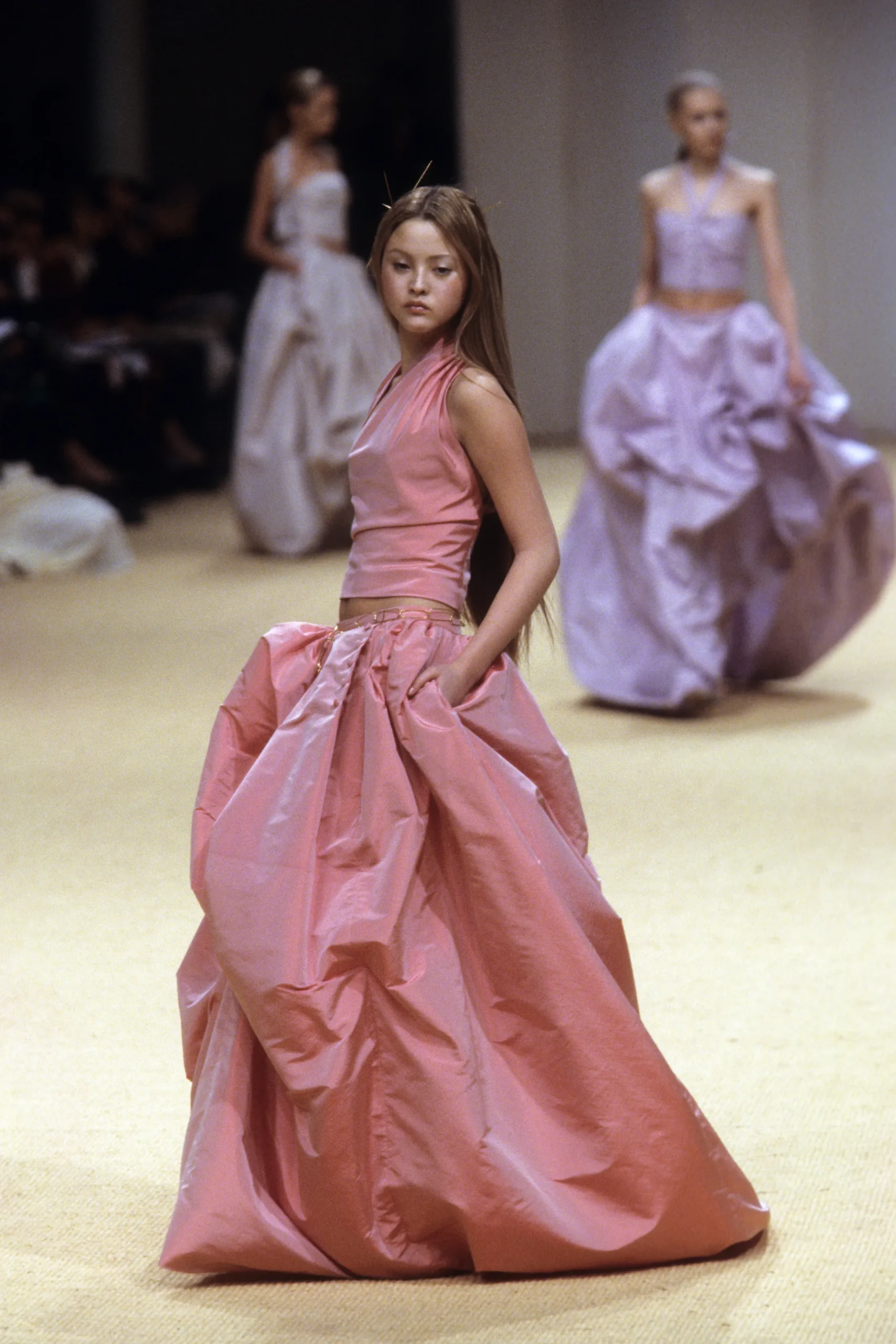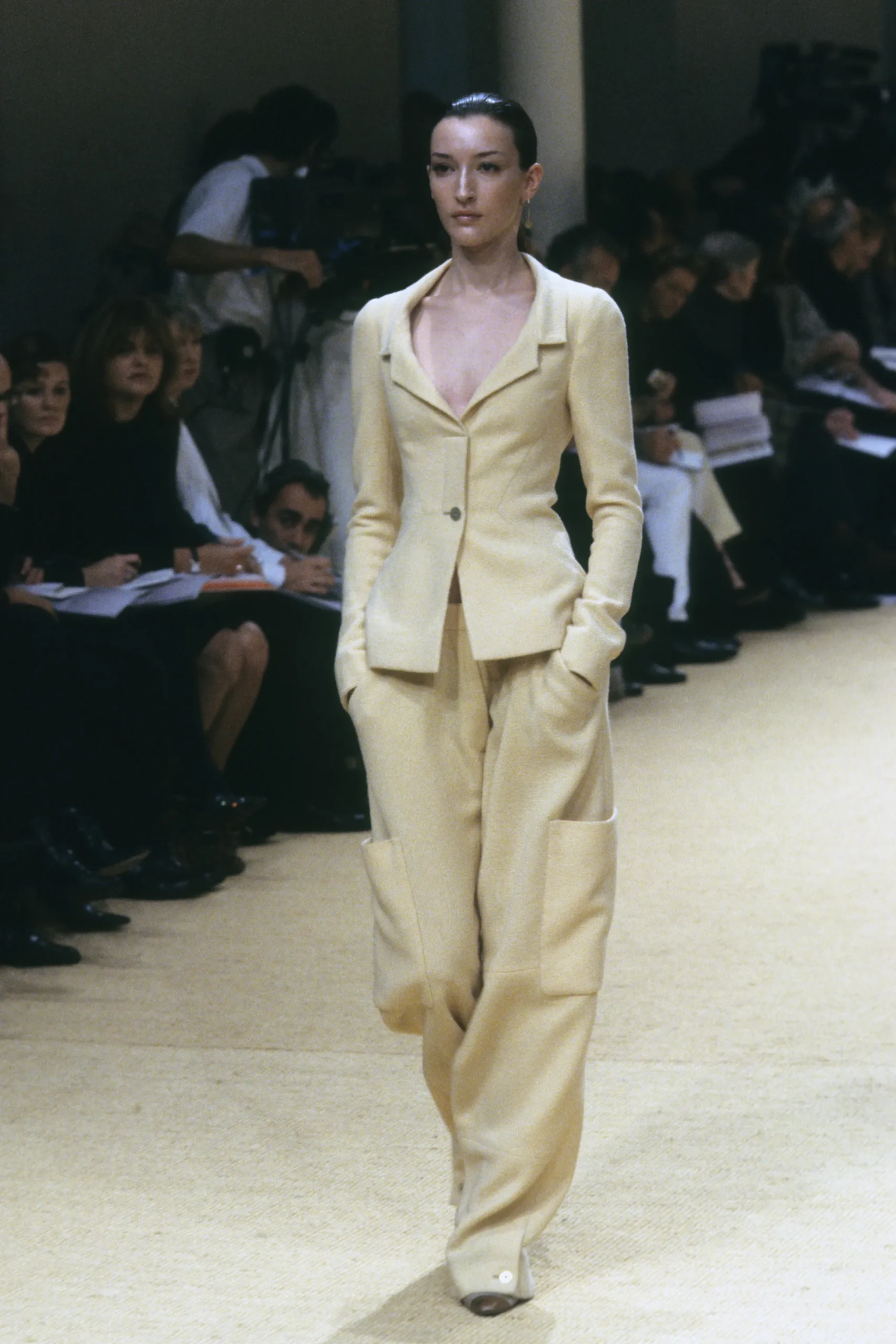In the past few years – we have without a doubt revived Y2K fashion, embracing it on the runway, in the media and in our personal wardrobes. But naturally, as time moves forward, as new technologies emerge in design technique, and as the cultural lexicon is continuously mined and regurgitated, trends in fashion evolve – the question remains, what’s next?
Whether you loved or loathed the resurgence of Y2K, nothing lasts forever – and in analyzing the most recent presentations this fashion season, there has been a palpable sartorial and aesthetic shift in the tone of what we are seeing on the catwalk.
Terms like ‘recession core’ and ‘quiet luxury’ have been thrown by trend forecasters and fashion journalists alike following the conclusion of Paris Fashion Week and the fall fashion season, as designers noticeably move away from gaudy 2000s styles and lean into slouchy tailoring and colour blocking, reintroducing 60’s mod silhouettes on the runway.
With a focus on experimental design techniques and emphasis on tailoring across a myriad of houses, it’s clear that designers have taken a step back from the Y2K trend in the context that we’ve seen for these past few seasons. While many runway presentations still included 2000s details like low rise, tube tops and ultra-mini skirts – 1990s fashion staples like monochromatic neutrals, high necklines and coloured tights all emerged as prominent trends this season.
Following the bold styles of the Y2K rebirth that have recently dominated media and fashion, it is no surprise that designers have simplified their collections – opting for a return to classic tailoring, solid colours, geometric patterns and practical workwear. The return to simplicity is reminiscent of the 90s minimalism that took over the runways following the electric period of 80s fashion.
90s Fashion, in so many words, was a period of minimalistic looks and experimental design, Miuccia Prada, Helmut Lang and Calvin Klein perfected the clean, sexy and chic look, while Alexander McQueen, Thierry Mugler and Vivienne Westwood pushed the envelope in innovative technology, runway showmanship, and avant-garde styles.
Simplicity, youth, and authenticity returned to luxury this season; we saw beautiful tailoring, sharp lines, and boyish silhouettes from Miu Miu, The Row and Jil Sander (to name a few). Academia and preppy styles also cropped up in button-up cardigans, sweater sets, and tweed-tailored suits.
Designers have cut back on flashy blinged-out details that have previously been in demand from customers, however, simplification does not necessarily equal boring. With technology in AI and fashion innovation in the industry on the rise, naturally – the aesthetics of design reflect the shift in advancement. Fashion houses interpret dystopia and futurism through a new lens during a rapidly changing time in digital innovation.
Truly transformative moments came from 90s fashion – robots sprayed Shalom Harlow at McQueen, the supermodel era thrived at Gianni Versace’s shows and Miuccia Prada launched Miu Miu. Notably, 90s fashion also evolved during the rise of the internet – radically changing the channels of communication and the entertainment industry. This period is not unlike the rapidly shifting digital advancements of today, where AI can design clothing, render images and even write this article for me, as we watch fashion evolve it truly is exciting to daydream about what is to come.
Here are some of our most beloved 90s fashion moments on the runway.
 Sydney Goldhawk is a Freelance Stylist currently living in Toronto.
Sydney Goldhawk is a Freelance Stylist currently living in Toronto.
With a love for all things vintage and runway, her perspective draws heavily from her fascination with the synchronicity she observes between modern aesthetics and references to the past.
















